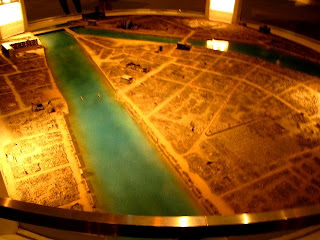We woke up really early that day to be able to catch the Shinkasen going to Hiroshima. Thank you Japan Rail Pass for our unlimited use of Japan's local transportation. Hiroshima is a good 332 kilometers from Osaka, and it took us about 2 hours to arrived at Hiroshima Station. Upon arrival, we headed over to their local tourist office (located inside the station) and ask for directions and maps. We took the tram (tram#6) that takes you right outside the Atomic Bomb Dome.
The A-Bomb Dome, burnt and damaged when the first ever atomic bomb hit Hiroshima August 6, 1945. It has become the symbol of the city's appeal for world peace. Strongly depicting the horrors of nuclear weapons. We strolled around the Peace Memorial Park then visited the museum located within the area.
A-Bomb Dome
Peace Clock Tower
Cenotaph for the A-bomb Victims. Where the names of the victims are engraved
The Hubby signing a petition to abolish nuclear weapon
Along the Honkawa Bridge, a number of volunteers were collecting signatures from the visitors around the world
Hiroshima National Peace Memorial Hall for the Atomic Bomb Victims
The hall of remembrance.
Absolutely breath-taking. And feels really peaceful inside. The interior wall is a 360 degree panorama of the A-bombed city seen from the Shima Hospital (or the hypocenter)* Around 140,000 mosaic tiles decorate the walls to represent the 140,000 victims of the bomb *goosebumps*
Children's Peace Monument
The paper crane became the symbol of the desire for peace when a 12-year girl named Sadako was diagnosed with Leukemia some 10 years after she was first exposed to the radiation. At 2, she was exposed to the radiation after the bomb explode but surprisingly didn't show any signs of physical damage. However 10 years later she died. Before she died, she folded paper cranes wishing for her health back, upon hearing that 1000 folded paper cranes will grant you a wish.
Hiroshima Peace Memorial Museum
An aerial view of what happened. Hiroshima before and after the atomic bomb.
These were authentic 1946 memorabilia donated by parents of the deceased.
*Info's were taken from the brochure guide inside the museum.




























0 comments:
Post a Comment